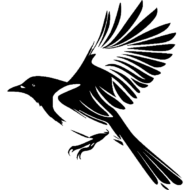In the last couple of months I have been reading a lot about essays. Of the four books reviews here, the one I’d most recommend for the general reader is the D’Agata. It’s a collection of essays with short introductory notes suited those curious about the shape of the modern essay and how it got there. For a recommendation for the writer I am torn. None of the other books is spectacular and none of them completely reflects my current thinking on the essay. But, I’d say the Lopate contains the most useful examples and that Moore’s Dear Mr Essay Writer shows the inner workings of the essay writer’s mind best.
The Next American Essay (A New History of the Essay) — John D’Agata. 2003.
D’Agata is interested in stretching the definition of essay as far as possible then looking to see what is happening at the margins. Some of these essays are very experimental and not all of the experiments succeed. The footnotes essay is a chore to get through. Others, like “India” — a series of “factual” statements on India taken from ancient sources, are stunning successes. This is a worthwhile book to read if you’re interested in the shapes that essays can take and in stitching up your own ideas about the form. Just be prepared to find a few that miss you. It’s very individual — several people have praised “Black”. I thought it was overwrought and grim.
* Ur texts for the modern essay *
Dear Mister Essay Writer Guy: Advice and Confessions on Writing, Love, and Cannibals. Dinty Moore. 2015.
Questions from other essayists are vaguely answered with quick replies and illuminating essays. There is a mediation on the exotic and the eating of a zebra burger that doesn’t go nearly as far as I would have liked it to, but… The one about how not to be a jackass about exes is solid life advice. Then there is some weird thing about brains and cauliflower that shouldn’t have been published. Other essays riff on topics or tangents to the questions asked by other essayists.
* amusing, short, uneven. *
Crafting the Personal Essay. Dinty Moore. 2010.
This book is meant to be used as a text-book. There are discussions of essays that are not included in the book. Clearly these are meant to have been read on class handouts. Many of the essays chosen for the book are old-fashioned. (And, conveniently, in the public domain.) The other essay examples are Moore’s own. And while not bad. Well, he’s not my cup of tea.
* if I needed a cheap text-book with examples in the public domain *
To Show and To Tell: The Craft of Literary Nonfiction. Phillip Lopate. 1994.
Another teaching text. I like the Lopate book better than the Moore. It thinks more deeply about the essay and the memoir in modern terms. It also makes better use of older essays. Though I think Lopate spends too much time on the memoir and disses the lyric essay as not really being the thing — not being truthful enough. He likes a solid fidelity to real life. Even as he admits that memoir is necessarily slanted or one-sided, he still pumps strongly on the side of writing the truth/fact.
* a little less fond of the lyric and experimental forms than I am but carefully thought out *






